Best XLR microphones 2025: Superb sound for studio and stage
Capture the very best-quality, noise-free performances with these XLR-equipped mics from AKG, Aston, Neumann, Røde, Sennheiser, Shure and more…
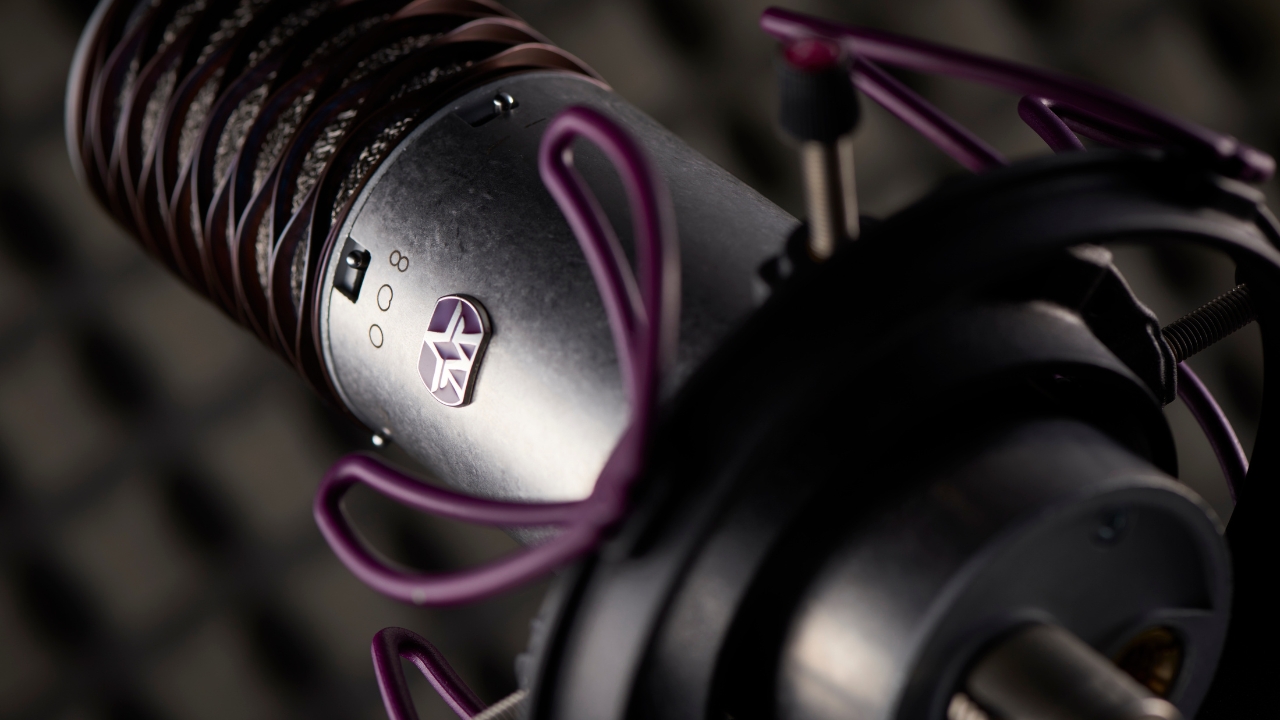
If you're looking for the best XLR microphones it might do you some good to think of them in terms of use case instead. Each XLR mic has the potential to excel at a particular use case, whether that's vocals, recording acoustic guitars, or being put on a drum kit. There are a lot of XLR mics to choose from too, so to make things easier for you we've sorted our top picks to match your specific needs.
XLR mics deliver a myriad of benefits versus USB microphones. They offer noise-free operation, can deliver phantom power, and their secure latch system makes them perfect for use in a busy studio. Nearly every serious studio microphone has an XLR connection, making this a very broad church indeed.
If you're new to recording or XLR microphones then you should have a look at our FAQs section which has loads of common questions answered by the expert team here at MusicRadar. If you just want to see the best XLR mics sorted by use case, then keep on scrolling...
Our top picks
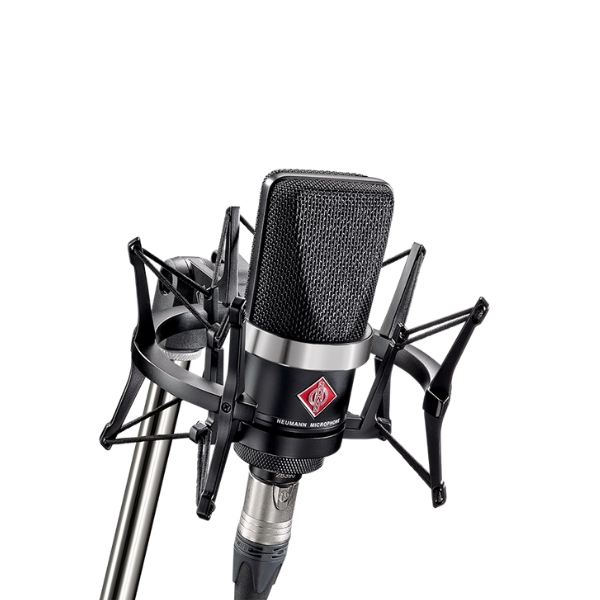
If you want an XLR mic that can handle pretty much any recording duty, then the Neumann TLM 102 is a great choice. Capable on vocals, guitars, or even drums, its legendary character makes it a must-have for your mic locker.
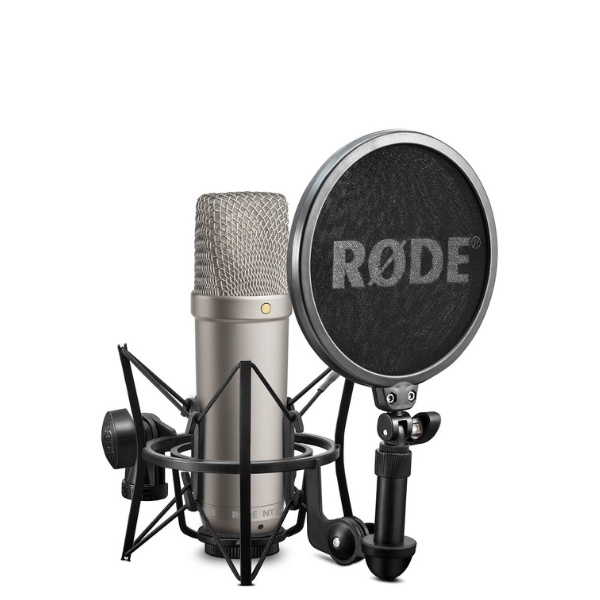
Considering the quality you get versus the cost, the Rode NT-1A is a brilliant first-time XLR microphone. If you're just looking to get into recording and don't want to commit too much cash, it'll handle a vast array of recording duties, and perform excellently.
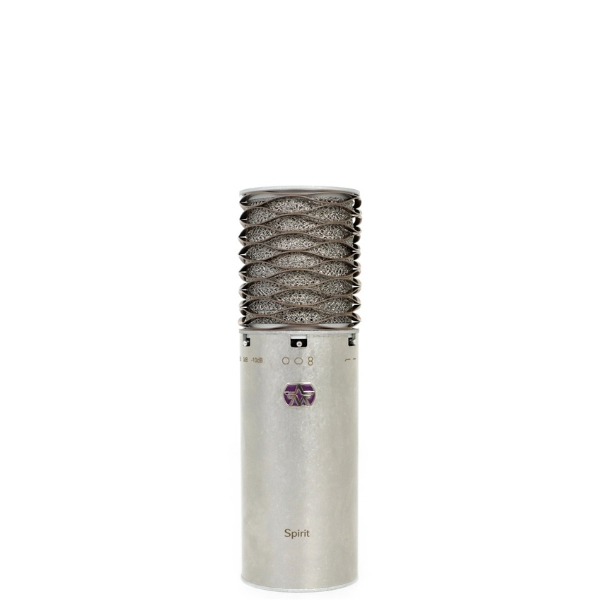
If you want to record great-sounding vocals, our suggestion is that you buy an Aston Spirit. The Spirit is a fantastic-sounding microphone with all the bells and whistles, including switchable polar patterns, a pad, and a low-cut filter.
Best overall
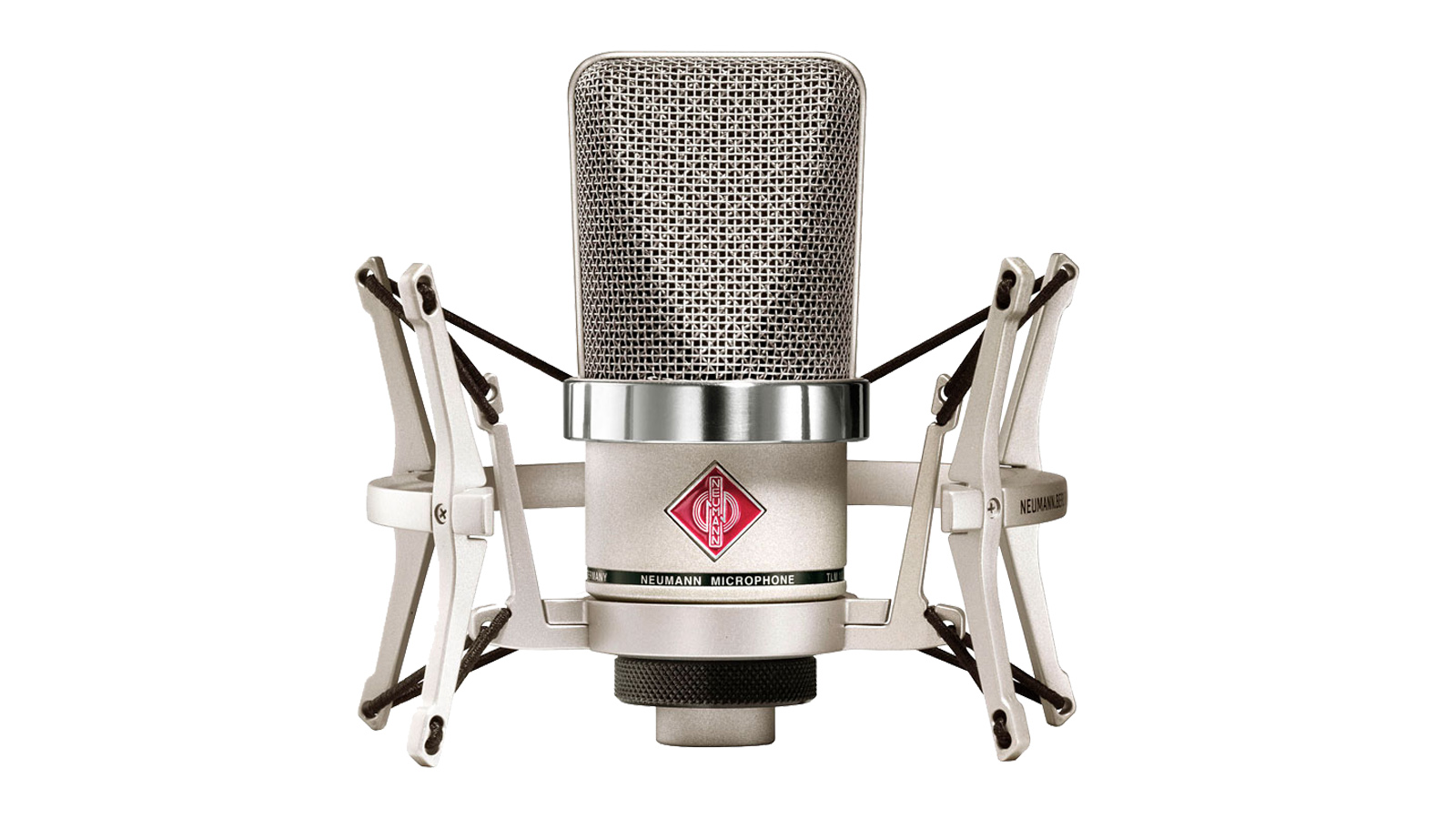
Specifications
Reasons to buy
Reasons to avoid
Neumann unashamedly refers to its TLM 102 as an entry-level microphone, and indeed it's the German brand's most affordable large diaphragm condenser. Pitched firmly at small studios and home studios, the TLM 102 has been developed to be a versatile small mic that can handle almost anything with aplomb. If you're just starting out, this would make a magnificent first purchase.
Not that we're claiming it's cheap. Far from it, it's still a fair wedge of cash, but it is an inexpensive way to buy into the Neumann brand, and more importantly Neumann quality.
Its frequency response is remarkably flat across the mid-range with a slight lift around 10KHz. This gives it a transparent, open character that's capable of capturing the authentic voice of vocals, strings and even percussion. The bottom end has all the tell-tale rich warmth you'd expect from a large diaphragm condenser, and the TLM 102 doesn't muddy up when close miking.
This is a tiny mic for a large diaphragm condenser, considerably smaller than Neumann's more expensive models, but its weeny form factor makes it easy to place when miking strings, cabs and percussion. There's no pad but it does have a relatively high SPL tolerance of 144dB, which makes it entirely suitable for drums and electric guitar. It also boasts very low self-noise that won't spoil quiet acoustic and tender vocal recordings.
It's the perfect allrounder for those of us who are happy investing a bit of money in one mic that can cover most bases very well indeed.
Read the full Neumann TLM 102 review
Best budget

2. Røde NT1-A
Our expert review:
Specifications
Reasons to buy
Reasons to avoid
Two features make the Røde NT1-A a standout microphone. With a self-noise level of just 5dBA it is one of the quietest mics out there. This has profound implications for capturing quiet sound sources or dynamic playing – anything where volume levels drop away to almost nothing, only to reveal that annoying, yet familiar mic hiss. Not with the NT1-A. Your performances will remain as clean as a whistle on washday.
The second 'say whaaat?' feature is the price. This microphone represents good value on its own, it is a large diaphragm condenser after all, but factor in the included shock mount, XLR cable and pop filter and we're elevating plain-old 'good' to downright astonishing. Røde is giving you everything you need here to capture a quality performance. Just add talent.
How does it sound? The NT1-A delivers warmth, clarity and smoothness. We found it a little on the bright side, but if that's not the sound you're looking for it can easily be fixed with a little EQ. We recommend the NT1-A for pretty much everything but it's particularly well suited to vocals (with great potential as a podcasting mic) , guitar and percussion. There's no pad but its high SPL figure of 137dB makes it a great vocal mic, and perfect for sizzling guitar cabs.
Best for vocals
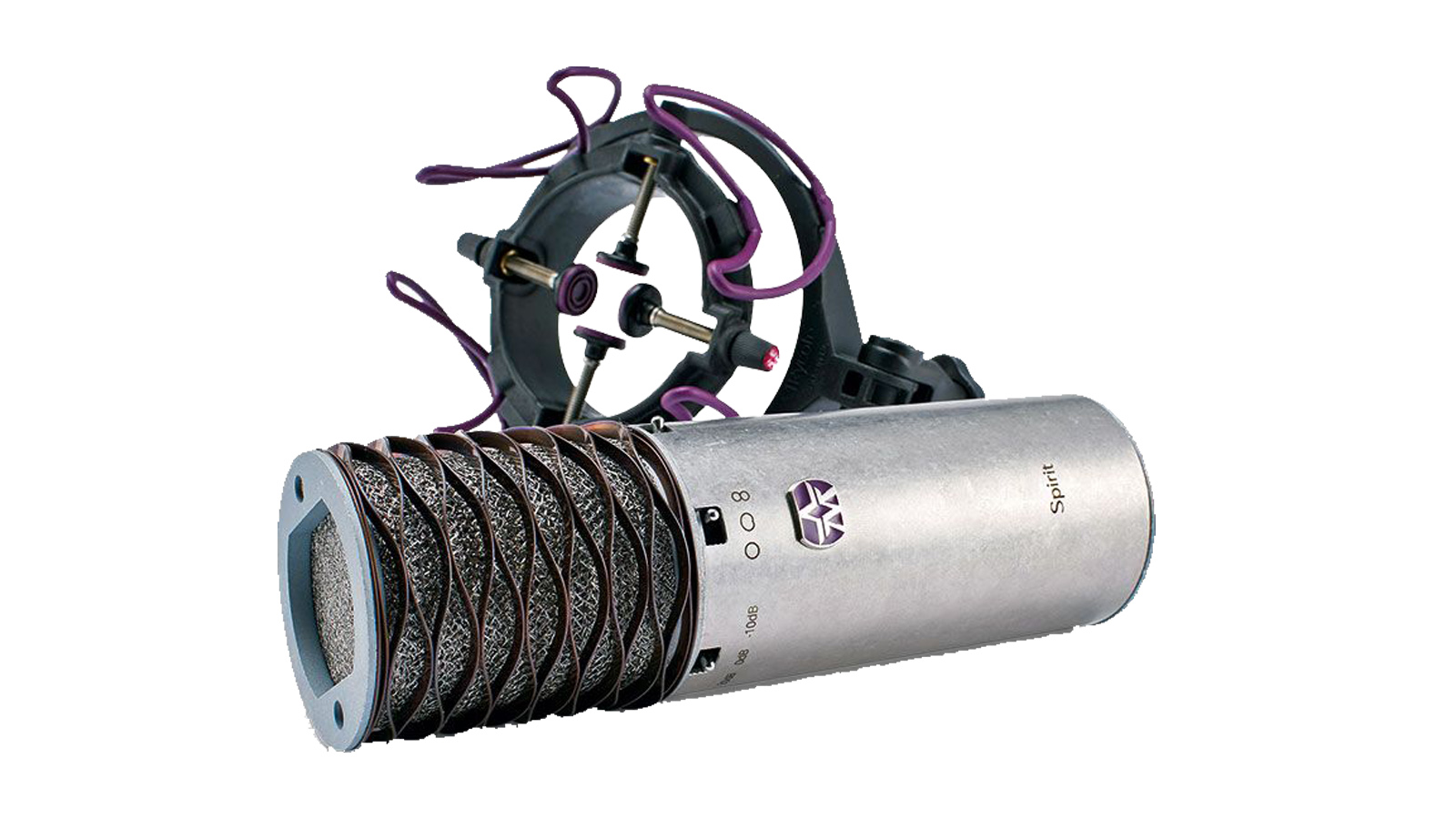
Specifications
Reasons to buy
Reasons to avoid
Much of the time the regular ol' cardioid polar pattern serves us well for most applications, from capturing vocals to miking up guitar cabs and percussion. It seems to hit that sweet spot, providing great tone, good isolation and enough feedback resistance.
Sometimes though it's just not quite right for the job at hand, which means reaching for another mic, or, in the case of the Spirit, flicking a switch to select another pattern. Switchable condenser mics are nothing new, nor are they particularly unusual, but what sets the Spirit apart is that it's both versatile and great value. Oh, and it sounds wonderful too.
This is a lovely mic for capturing vocals and acoustic guitar. It's not too dissimilar to its baby sister the Origin, displaying a smooth mid-range, and an agreeably bright high top. You don't have to go searching for either warmth or clarity with Aston. The proximity effect is well controlled, and we're happy to report that this didn't translate into thinness when omni was selected. The third pattern is the less used, but no less useful, figure-8.
As well as the switchable patterns there's also a pad with selectable -10dB and -20dB attenuation, plus an 80Hz low-cut filter. You really do benefit from a lot of versatility for your money with the Spirit, even more so with the Spirit Black Bundle, which includes a much needed shock mount and pop filter.
Read our full Aston Microphones Spirit review
Best for podcasting
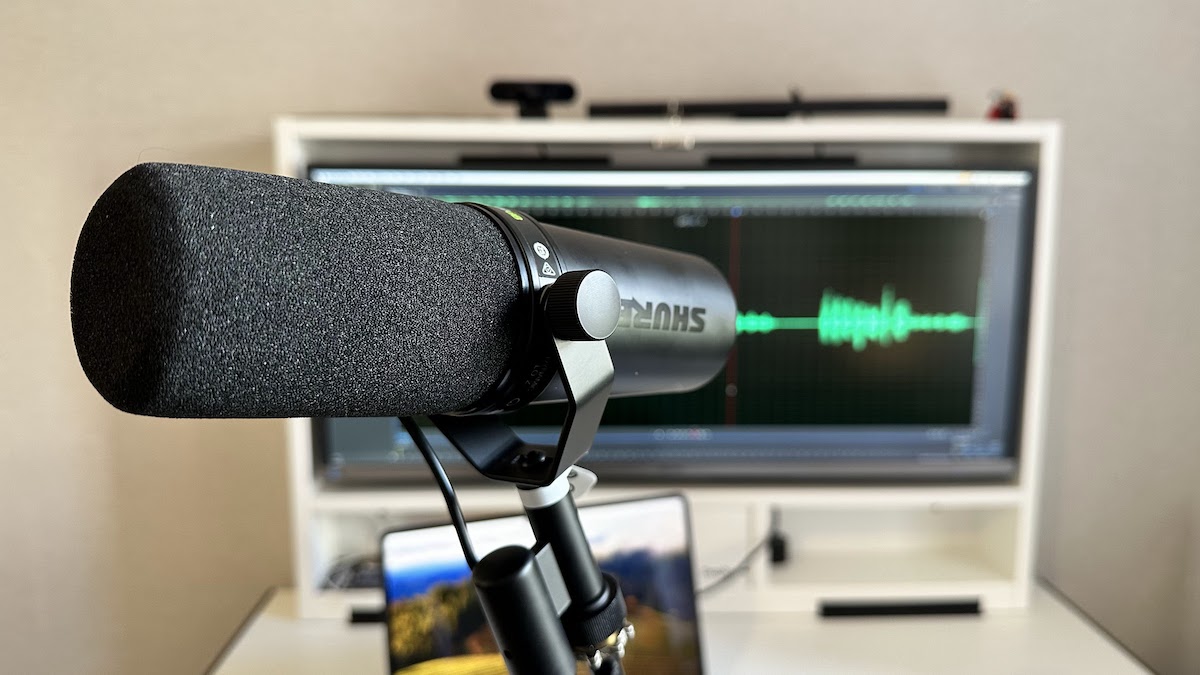
Specifications
Reasons to buy
Reasons to avoid
Not all of us are fortunate enough to record in fabulously expensive, well-treated studios where sound reflections and unwanted noise aren't too much of a concern. In fact, the popularity of home studios, as well as the rise in the number of us hosting our own podcasts, means that more and more of us are recording in sub-optimal spaces.
No matter. Here's a mic that can make vocals sound as syrupy as treacle, even in rooms so poorly treated their owners should be arrested for cruelty.
The SM7dB just loves to be close miked, which is why it can make vocals sound so warm, so rich and seductive. It's also phenomenal at rejecting unwanted off-axis noise, which is partly a by-product of close miking and partly because of its low sensitivity.
It has a relatively linear frequency response from about 100Hz to 12kHz, ramping up smoothly from the bass but falling dramatically from the high end. If you demand more colouration, two handy switches give you the choice to apply more bass roll-off or a presence boost.
The only drawback of the old SM7B Was that it required quite a lot of clean gain to perform at its best, but this has been remedied thanks to the addition of a new active preamp. No Cloudlifter required. Its distinctive design also incorporates a shock mount, pop filter and electromagnetic shielding to defeat hum from nearby electrical appliances. It really is perfect for recording in imperfect places.
Read our full Shure SM7dB review
Best for acoustic guitar
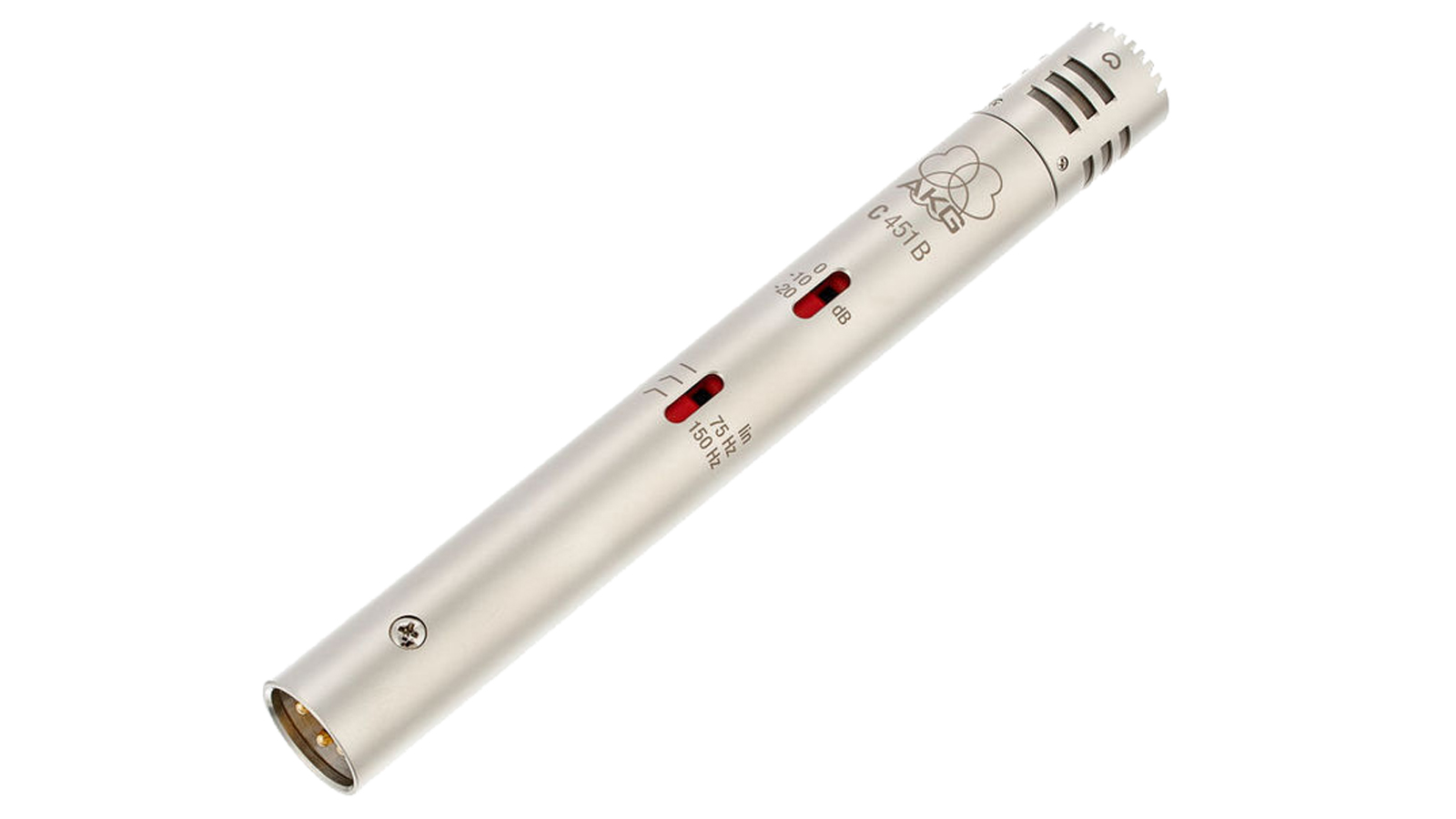
5. AKG C451 B
Our expert review:
Specifications
Reasons to buy
Reasons to avoid
The C451's is a natural for cymbals, hi-hats and snares. This instrument mic excels at capturing transients, the short, snappy bursts of energy that occur at the beginning of a strike as the waveforms rise out of nowhere to form magnificent peaks. Its ability to catch these fast attacks is complemented by its capacity to add a shimmering quality to percussion and most other things it’s plonked in front of, including strings and acoustic guitars.
The 20dB pad enables it to capture the most ferocious percussionists too, without fear of overloading or even damaging it.
It's a wonderful mic to brighten up a lifeless session. Any dead, boxy sounding guitar or stringed instrument can be resuscitated with a C451 nursing it back to a full and vibrant life. Its character is partly shaped by its ultra-fine diaphragm, but just as crucial is its pronounced presence bump after about 5KHz. The switchable low-cut filter that roll-offs bass at 75Hz or 150Hz, also helps to remove any murkiness introduced by close miking.
The resulting sound is invariably smooth, authentic but with an added exquisite shimmering quality that no other mic can quite match.
It's a tough little thing too, quite capable of sitting in front of a hi-hat night after night, venue after venue.
Best for guitar cabs
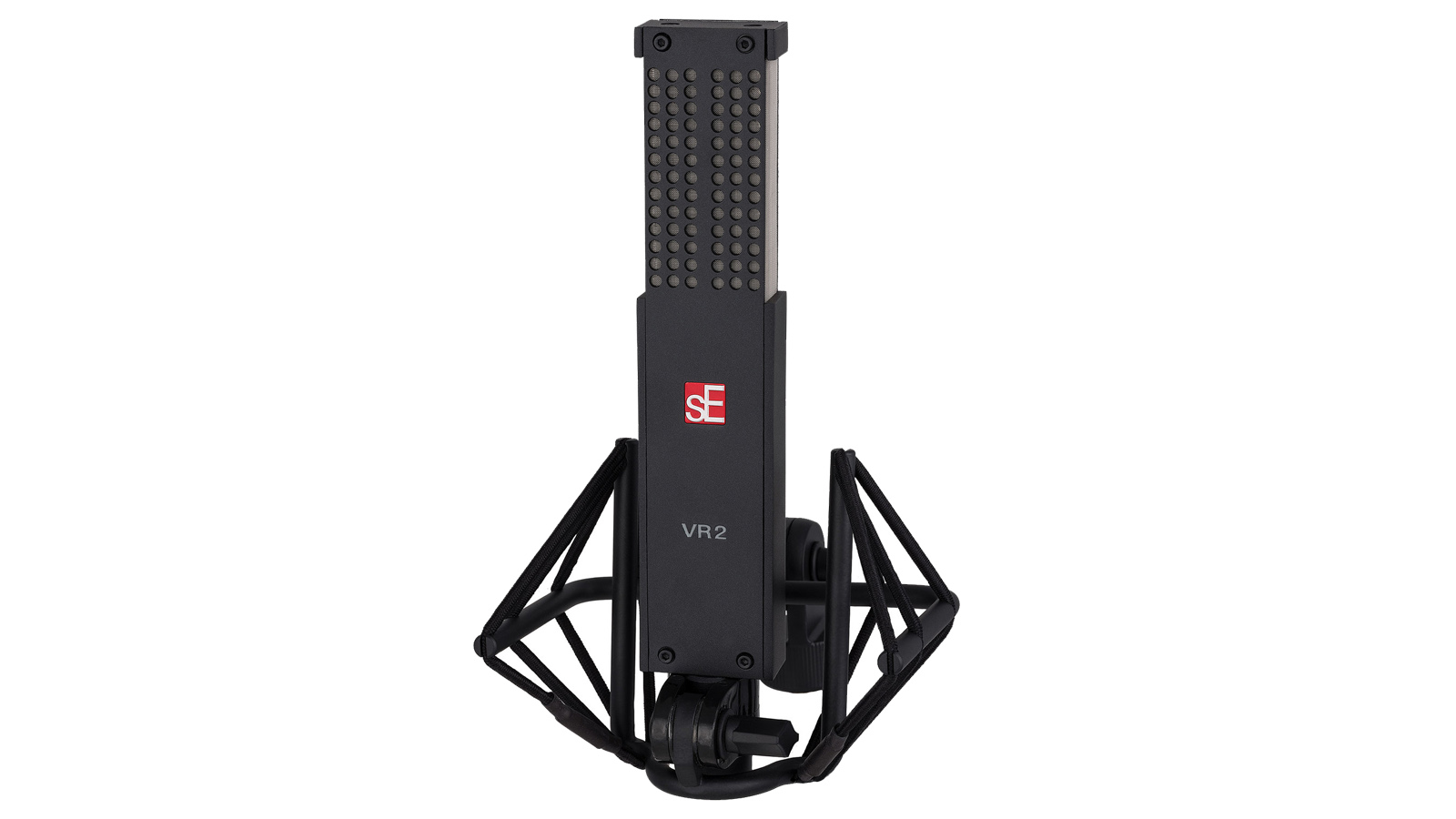
Specifications
Reasons to buy
Reasons to avoid
Producers love ribbon mics for their detailed, but not over sensitive, characteristics. They sound natural, warm, clear – we could use a long list of adjectives here but what we're trying to say is that ribbons make your recordings sound just like they should. Authentic.
Sometimes though, they lack top-end response, and consistency can be an issue if they're used with a variety of different pre-amps with assorted impedance ratings.
To answer these criticisms, the Voodoo VR2 has been developed by sE Electronics CEO and classical musician Siwei Zou to exhibit a wider than usual frequency response. Its response curve is extremely linear with a very, very slight presence boost between 2KHz and 10KHz. Take it from us, this mic will capture everything and capture it authentically.
Most ribbon mics are passive, which means that you can alter their sonic characteristics by plugging them into preamps with different impedances. For example, a low-impedance pre-amp will result in a sound with less bass response, which can be useful for reducing the proximity effect.
Some producers, with a cupboard full of preamps or a preamp with variable impedance, use this to their advantage, a little like they would EQ. Frankly, if this just sounds like a faff, you're going to love the VR2, which is one of the few ribbons available with active circuitry. This makes it utterly consistent whatever the impedance of your preamp, and gives it high output and superior signal-to-noise performance – a boon for recording quiet instruments.
Read our full sE Electronics Voodoo VR2 review
More options...

Specifications
Reasons to buy
Reasons to avoid
What are you going to buy when you finally win those millions? A lime-green lambo? A place in the sun? A '54 strat? A locker full of iconic vintage microphones?
Hold that last thought. What if you could have a locker full of virtual mics right now? That sound pretty much indistinguishable from their famous physical ancestors but at a fraction of the cost?
Mic modelling has been around for some years now, and to be honest we've found the results pretty mixed. Usually, the main problem is a lack of consistency in the signal chain. No matter how good the quality of the modelling, there's always the risk that somewhere, at some point, something is going to colour the authenticity of the sound. Rendering your sound less Sony, more phoney.
Slate Digital's solution is to control the whole signal chain from start to finish so that its integrity is guaranteed. Its VMS suite includes both a colourless mic and a pristine pre-amp – if any audio kit has ever had a personality bypass this is it. What it does do though is offer up a completely blank canvas for Slate Digital's plugin to paint its magic.
Which it does in eight different hues. There's the FG-47 (the iconic U47), FG-800 and 800M (after the big Sony), FG-251 (Telefunken), FG-67 (Neumann), FG-12 (AKG), FG-M7 (Shure, beloved of Michael Jackson), and the FG-269 (Neumann). Two software preamps are also bundled with the VMS, the FG-73 (Neve 1073), and the FG-76 (based on a valve Telefunken).
The results are so spectacularly good that we enjoyed a morning full of delightful déjà vu moments. Sure, these virtual mics aren't the real thing but they sound damn close.
The star of the show is undoubtedly the plugin, but it wouldn't be able to shine without its two support acts. The ML-1 mic, a large diaphragm FET, and the bundled VMS-ONE hardware preamp, are what makes modelling a viable alternative to the real thing.
Read our full Slate Digital VMS review
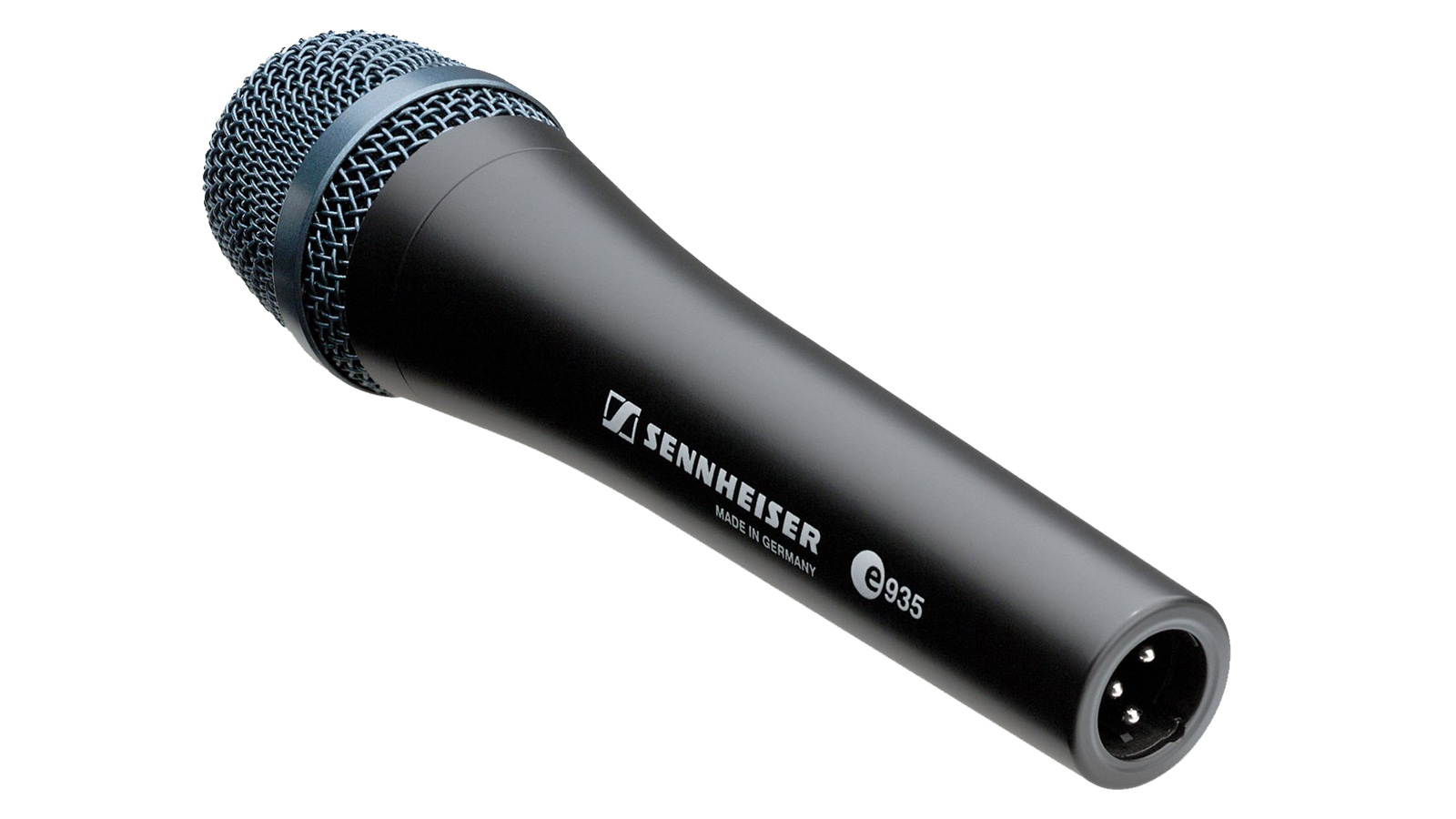
8. Sennheiser e 935
Our expert review:
Specifications
Reasons to buy
Reasons to avoid
The sub $200/£200/€200 live vocal mic market is a very crowded place, traditionally dominated by the Shure SM58 but now full of wannabes trying to steal its crown. You have to offer something a bit special to survive in this space, so it's just as well the e 935 has a few tricks up its sleeve.
Sennheiser has custom-voiced the e 935, and given it plenty of output, in order to make live vocals stand out in the mix. It's characterised by a transparent high-end with defined mids to increase vocal intelligibility, so that even singers with delicate voices don't get lost in a mishmash of guitars, keys, bass and drums. The mid-range can prove a trouble spot for some dynamic mics, making vocals sound a bit mushy and indistinct, but fortunately the e 935 really has inherited that distinctive Sennheiserish clarity.
Its cardioid pattern no doubt helps with this quest for decent on-stage isolation and also provides good feedback rejection. A hum compensating coil cuts electromagnetically induced noise to a minimum, and the internal shock mount ensures only your sweet voice shines through without the added distraction of handling thumps and bumps.
Sennheiser is proud of the degree to which this rather smart looking mic can be mistreated. So much so, it's made a rather extreme video of it being unscientifically tested to destruction with the help of hammer blows, drops from high buildings and van tyres grinding it into tarmac. So, it should survive Friday nights down at the Nag's Head.
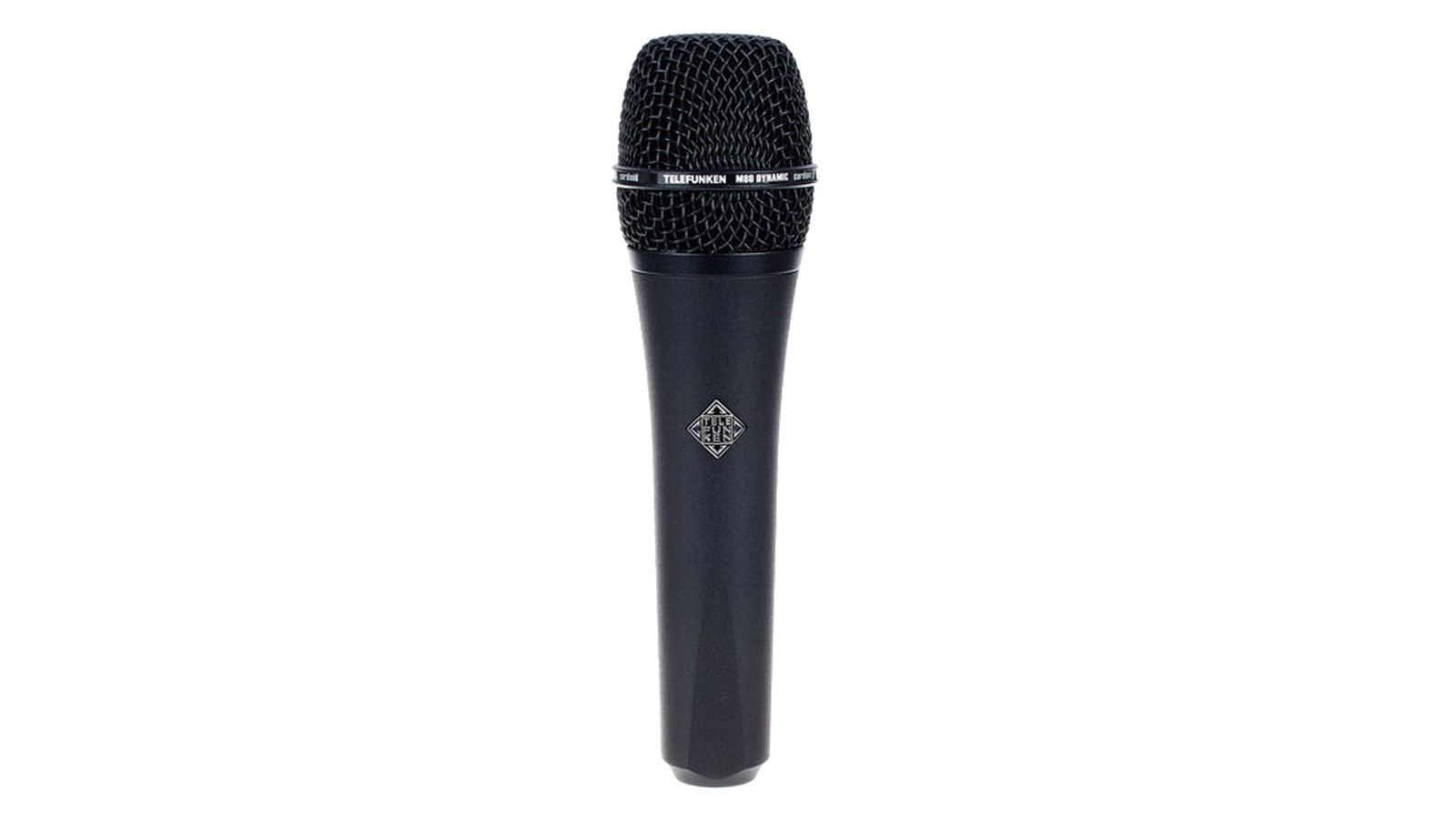
9. Telefunken M80
Our expert review:
Specifications
Reasons to buy
Reasons to avoid
When you can pick up a decent dynamic mic for under $/£/€100, is there any justification for paying twice that? We think there is if your cash is being invested in a Telefunken M80.
The holy grail of performance mics is one with the tone of a good studio condenser but with the on-stage advantages of a robust dynamic. The M80 comes pretty close.
It is, of course, a dynamic microphone but it's one that's been given a robust yet super-thin capsule membrane to give it a wide frequency response. This makes it sound more condenser-like than it really should. Its character is bright, open and airy across the mid- and upper-ranges, while the bass response is strong and clear with little risk of getting bogged down, even when close miking.
Despite being specced with a thin membrane, the M80 is super-tough and clearly built to last a lifetime of on-stage abuse. Hand-assembled in the USA, its metal body is powder-coated, the eye-catching headgrille is chrome plated and internally it's well protected against handling noise.
Its narrow supercardioid pattern keeps feedback to a minimum, while isolation is so good it's a great choice for an instrument mic. It may look like a handsome handheld vocal mic but it's just as happy capturing a crisp snare drum – just ask Butch Vig.
This is a mic that may look sombre and business-like in black but don't be fooled, you can actually order it in a veritable rainbow of different colours including gold, pink and orange – who knows where your creativity will lead you!
FAQs

Why choose an XLR microphone?
Cables in lengths longer than about 15 feet can act like long antennas that can't help but pick up RF and other electromagnetic interference. This can be heard as buzz or grainy 'noise' that, unless you're a student of the late Holger Czukay, rarely adds anything to a performance.
An XLR cable, which is a type of 'balanced' cable, overcomes this issue with some rather nifty phase inversion tricks. Instead of having a single core, an XLR cable commonly has three (they can actually have up to seven for specialist uses). There's a ground wire, and a hot wire that carries the audio signal. A third wire, the cold, carries the same audio signal but an inverted version of it.
At first this seems nonsensical, because surely the cold wire will silence the hot wire? After all, if you take two identical audio signals and invert one, a condition known as 'out of phase', you'll hear nothing because the two signals will cancel one another out. These wires will both be identically susceptible to noise, just as an unbalanced cable will.
The trick, which is ridiculously simple but rather brilliant, is to flip the inverted cold channel back into phase again at the end of its journey. It now precisely matches the hot channel so the original audio can be heard loud and clear. But by re-inverting the second channel the noise is now out of phase and therefore cancelled. Clever, eh?
It may take you a minute to get your head around this, but don't worry. The only thing you need to remember is that balanced cable runs don't suffer from the noise issues that unbalanced cables do. There's one caveat – we're only talking about additional noise that the cables pick up, not room noise or other noise that the mic may have suffered during the recording or performance.
There are other balanced cables out there, TRS for example, but XLR trumps them all with its additional features, phantom power being one of the most significant.
What is phantom power and grounding?
Some mics, usually high sensitivity models such as condensers, need power to energise their active circuitry. Occasionally, this is supplied by an onboard battery but more often than not it's provided by an audio interface, or mixing desk, and delivered via an XLR cable on pins two and three. This supply is known as phantom power (because it haunts the audio wires rather than having its own wire) and it comes in three flavours – 12, 24 or 48 volts with the latter being the norm.
Phantom power makes the XLR's ground wire, on pin one, particularly relevant. Pin one is designed to be slightly longer than pins two and three in order to make an initial connection when an XLR connector is plugged into a socket. A split second before the juice starts flowing your expensive mic will have already been grounded, protecting it from potentially catastrophic electrical shorts.
The ground wire, working in partnership with the cable's braided or metal shielding, also reduces the possibility of ground loops, interference and noise ruining your audio signal.
What's so good about the XLR connector?
Most XLR connectors also feature a simple, easy-to-use latch, that ensures the male connector drives home with a satisfying click (no sniggering at the back). This, and the three pin design, makes it easy to orientate the connectors correctly, even in dimly lit conditions, unlike some connectors we could mention. Hello USB.
Microphones will almost always have male connectors, and mixers, interfaces and the like will have female connectors. The way to remember this is that the pins point in the direction of the signal flow.
Another advantage of XLR is that it's a mature standard that has remained little changed since the mid-fifties. An XLR-equipped mic will be compatible with pretty much every other XLR-equipped piece of audio kit made since then and its popularity shows no sign of diminishing. Other connector standards seem to change every few years (hello USB again) rendering equipment awkward to hook up, if not obsolete. There's no such worry with XLR.
Which brands make the best XLR microphones?
The market of XLR microphones has become pretty vast in recent years, with so many different brands vying for your attention and business, it's worth knowing which of them makes the best products.
Shure has proven itself to be the king of microphones, with either an SM57 or SM58 finding its way onto virtually every stage in the world. These microphones have become the industry standard for live instruments and vocals, and sit at a price point which is affordable - but still implies their quality. Mics such as the SM7B (featured in this guide), as well the KSM and MV ranges cover virtually all the bases, including podcasting, live broadcast, field recording and more - and all at reasonable prices.
Røde is another of the mic world's biggest companies. Probably best known for the NT-1A (again, featured in this guide), the company has made a name for themselves in the more budget friendly end of the market. The entire NT range has gone down a treat with those recording vocals in their bedrooms, or starting their own radio stations or podcasts. Get high-quality audio for not a lot of cash.
AKG microphones are worth taking a look at too, if you're looking for a brand which offers vocal and instrument microphones of many different levels and types. AKG's ranges of dynamic and condenser microphones cover plenty of ground, with the cheapest offering coming in well under $100. The sound quality, durability and reliability of AKG mics is up there with some of the very best.
Sennheiser mics are also commonly seen and used in venues all over the world, thanks to their affordability, high quality and durability. Their 'e' range is arguably their most popular range of XLR microphones, offering up instrument and vocal mics at multiple price points that are capable of virtually all musical scenarios. Sennheiser also manufactures some of the best broadcast mics around.
Neumann mics are some of the very best in the business. They'll set you back a fair whack - with their self-proclaimed 'entry-level' microphones costing upwards of £400/$600 - but the sheer quality and tonal warmth is worth it. If you've got the money and a Neumann is appropriate for your needs, we'd suggest you buy it. They're versatile, and sound seriously good.
What types of XLR microphones are there?
Microphones equipped with XLR connectors come in a small variety of different types, all with their own pros, cons and idiosyncrasies. Here's a breakdown of what to look for when choosing a mic to suit your sonic ambitions.
Dynamic mics are usually tough, relatively inexpensive microphones with a limited frequency response, which makes them perfect for live use. Their robust nature means they can handle loud volumes – sound pressure levels (SPL) – and their limited frequency response can be advantageous on noisy stages or for handheld use. The inherent lack of sensitivity means they're less likely to pick-up background sounds and handling noise.
You'll find them useful in the studio too for exuberant vocalists who like to scream and bawl into the mic. Dynamic mics are passive, which means they don't need phantom power.
Condenser microphones are more sensitive and best-suited to studio use (although there are some rather robust exceptions). Large diaphragm condensers are the go-to mics for vocals because they can add a glorious warmth to performances. Small diaphragm condensers are more transparent and, as their name suggests, easier to mount in tight spaces. This and their ability to capture an authentic recording makes them a favourite for miking up instruments such as guitar cabs or keys. Condenser mics have active circuitry, which means they usually require phantom power.
Ribbon microphones are gaining popularity again after a long decline. Like condensers they also capture a very authentic sound but are loved for bringing a buttery smoothness to performances. Ribbon mics were traditionally passive but some modern models are active and require phantom power.
What polar patterns do the best XLR mics use?
Every mic is blessed with a polar pattern that dictates from which direction it captures sound. This directivity can also affect the tone of the captured sound, so you can use different mics with different patterns and tone fingerprints to your advantage.
Omnidirectional mics, or omnis, pick up sound from all directions. They sound open, lush with fantastic bass response, which makes them a wonderful choice for vocals. However, because they pick up sounds from everywhere, they are very susceptible to room noise or other sounds that you may not want to include. They can also be prone to feedback. These drawbacks mean they are rarely recommended for live situations, unless you want to capture ambient sounds.
Cardioids are much more directional than omnis, with a pickup angle of 131 degrees. They are most sensitive to sounds in front of the mic, and capture very little from the rear, which makes them a good choice for isolating vocals or instruments from unwanted off-axis noises.
The cardioid pattern is ideal for busy stages where a vocalist is competing with lots of other musicians in the mix, or for rooms with noisy fans or other background noise. They offer great feedback rejection but are susceptible to the proximity effect, which is a marked bass boost as the mic is placed closer and closer to the sound source. This can be a desirable attribute, or not, depending on the final sound you are trying to achieve. Due to their versatility and good isolation properties, they are the most popular microphones found in studios and on stage.
Supercardioids and hypercardioids are progressively more directional, with increasingly narrower pickup patterns, although they do capture more sound from the rear too. They are perfect for isolating vocalists on stage, provided the talent doesn't move around too much. Feedback is greatly reduced.
Figure-8 patterns are equally sensitive both front and rear but reject sounds from the sides. They can be useful for capturing two vocalists, and for other special uses and recording techniques. Most ribbon microphones have figure-8 patterns.
Find out more about how we test music gear and services at MusicRadar.
How we test
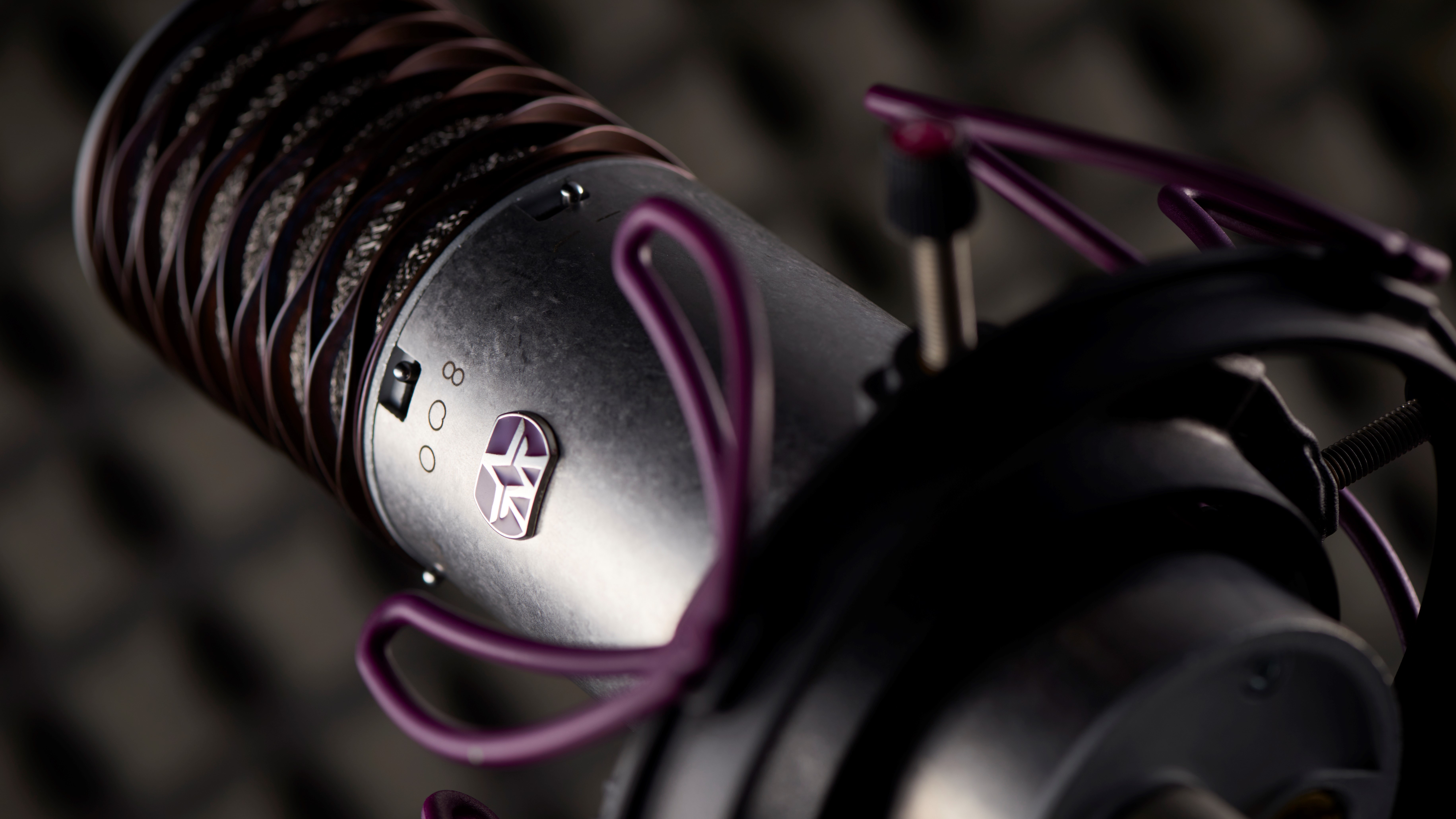
We've tested hundreds of microphones over the years, so you can rest assured we know what we're talking about when it comes to XLR microphones. When testing microphones we always take care to examine them in detail, testing them in multiple scenarios to ensure we get the most out of them.
Our first check is to give the microphone a good once over to see how durable it feels and how well finished it is. Where possible we'll also open up the capsule to see what's inside. This allows us to determine the build quality of the internals, and make a note of anything interesting we see there in terms of the construction.
Next we'll get straight into real world testing, applying the microphone to its use case. With a condenser mic we'll likely try it on vocals first, whereas a dynamic mic will probably get put in front of a loud guitar cab or snare drum. We'll aim to get as many recordings as possible during this phase with a variety of sources to get as wide a scope of sound as possible.
Of course XLR mics can typically work on any source, so we'll also try them out on some more left field choices to see how they react. It could be we give a vocal a go with a dynamic mic, or try recording a tube amp with a condenser to see how they perform outside of their comfort zones.
We'll typically try and test a microphone for a minimum of two weeks, using it as we would any of our own so we can get a good feel of what it's like to live with it. Using our previous experience with many microphones, we can get a good picture of how it sits in the pantheon, comparing it with its contemporaries.
Read more about how we test music making gear and services at MusicRadar.
Related buying guides
MusicRadar's got your back
- Free your performance with the best wireless microphones
- Hold your microphone steadfast with the best mic stands
- Plug and play with the best USB microphones
- Make big savings with the best budget microphones
Want all the hottest music and gear news, reviews, deals, features and more, direct to your inbox? Sign up here.
When Simon's childhood classical guitar teacher boasted he 'enjoyed a challenge', the poor man had no idea how much he'd underestimated the scale of the task ahead. Despite Simon's lack of talent, the experience did spark a lifelong passion for music. His classical guitar was discarded for an electric, then a room full of electrics before Simon discovered the joys of keys. Against all odds, Simon somehow managed to blag a career as a fashion journalist, but he's now more suitably employed writing for MusicRadar and Guitar World. When not writing or playing, he can be found terrifying himself on his mountain bike.
- Matt McCrackenJunior Deals Writer
